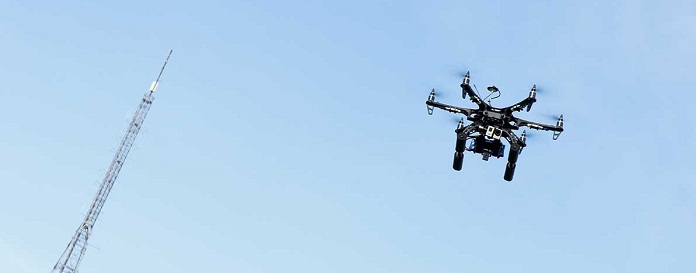HAPlink communicates with cell phone masts up to 50 kilometres away. It uses a beamforming antenna, which focuses a signal in a narrow beam rather than emitting it equally in all directions. This is the first beamforming system to work with standard 3G or 4G phone signals, plugging into the antenna port of a standard 4G data card.
The aim is to develop a communications system for a solar-powered, high-altitude drone that can stay in the air for weeks at a time, says Bob Dalgleish at Roke Manor.
Pocket size
But it could also be a boon for mobile phone users. The system’s long range means it can provide a phone signal to areas normally considered black spots. Dalgleish says the technology could easily turn a high-altitude drone into a “base station in the sky”, providing wide area coverage.
HAPlink weighs about a kilo and its antenna array is about 30 centimetres across. At this size it could be mounted onto vehicles, boosting phone coverage for passengers. But if the device can be shrunk to pocket size, a portable HAPlink could be even carried around with you, says Dalgleish.
Test flights using the tech are planned for 2017. In the meantime, Roke will need to demonstrate that it is safe to use cell towers to control drones. Regulators could be reluctant to give the go ahead because towers sometimes go down, says drone specialist Gary Mortimer at website sUAS News. “If there is a particularly interesting edition of Coronation Street and a Twitter storm lowers link speeds, will the drone be home in time for tea?”
More about:
















































